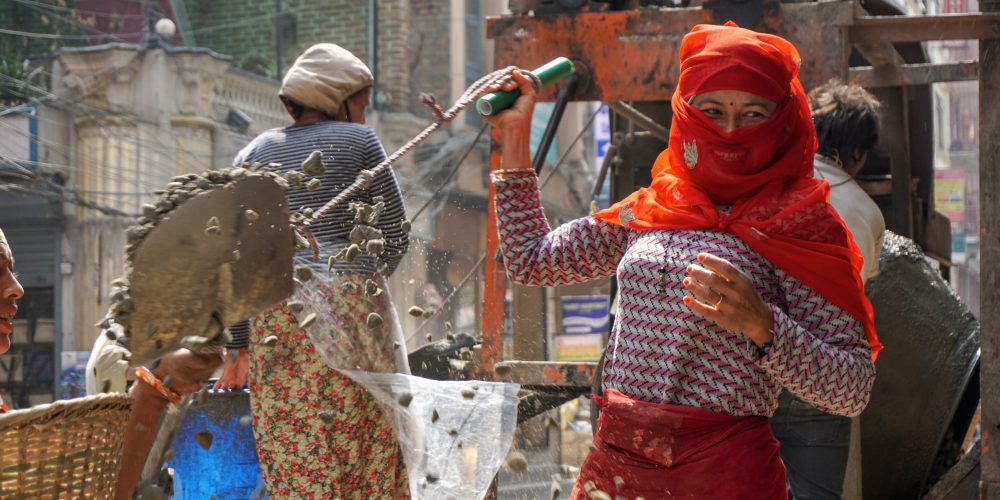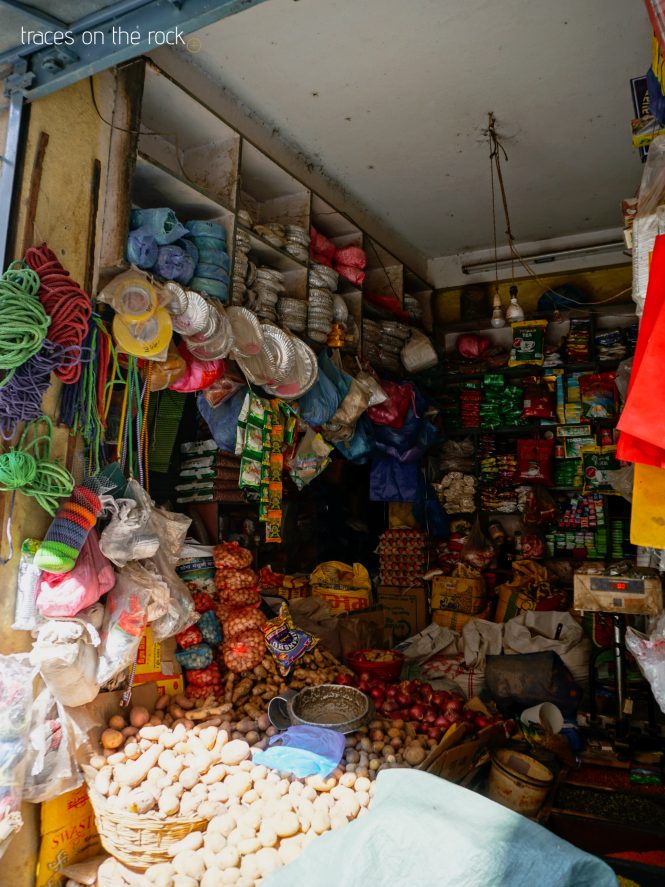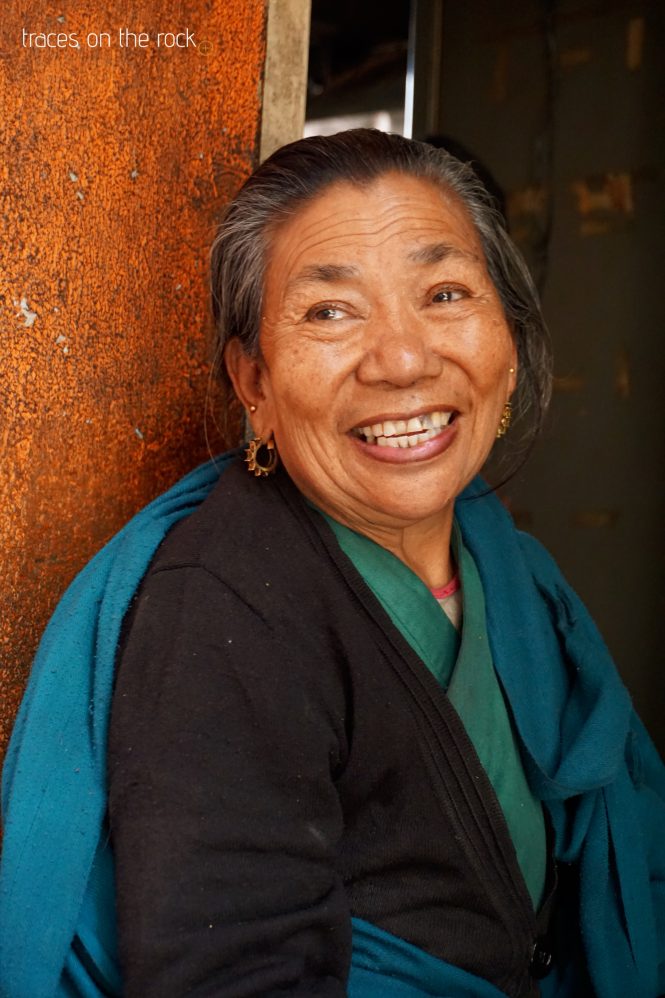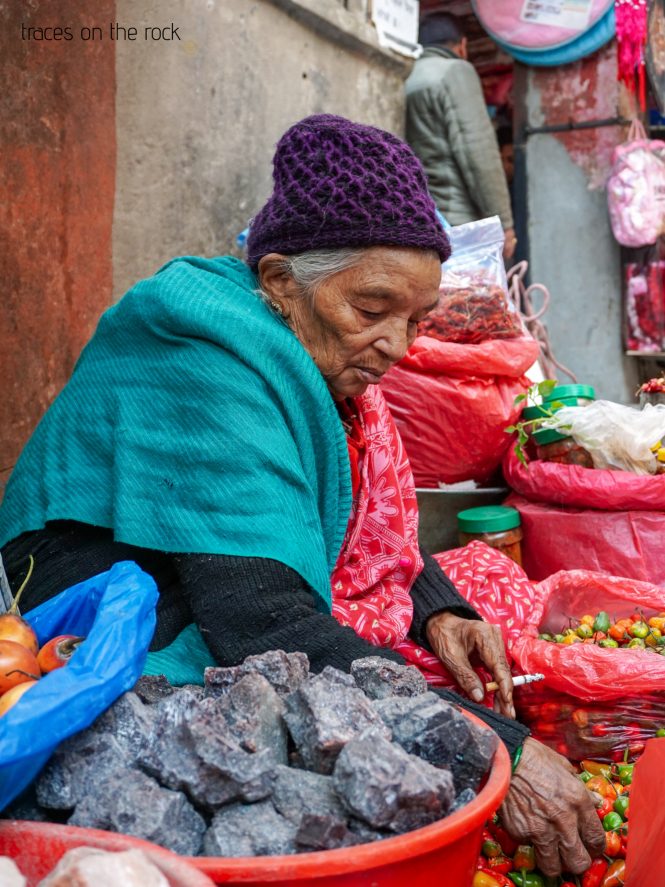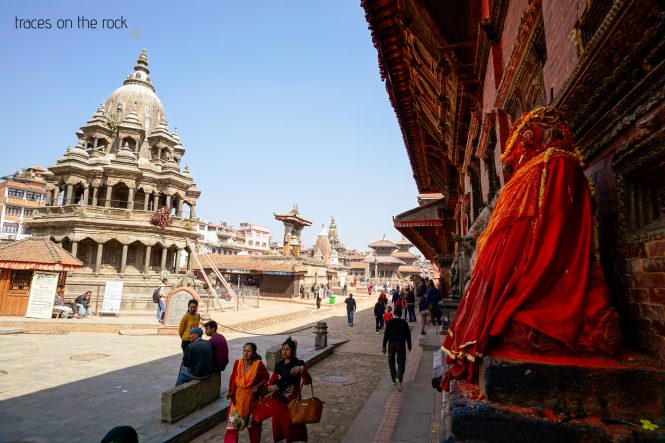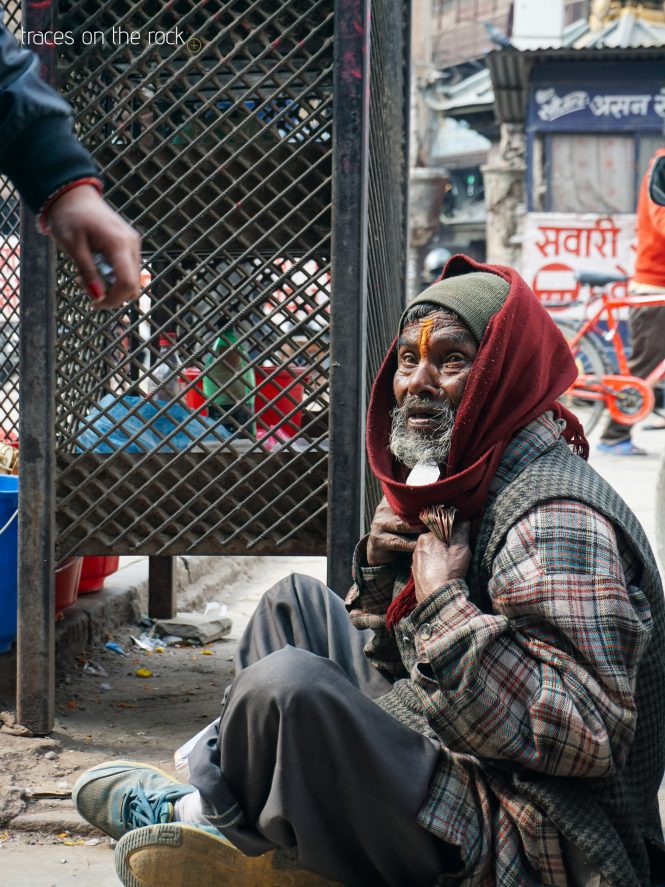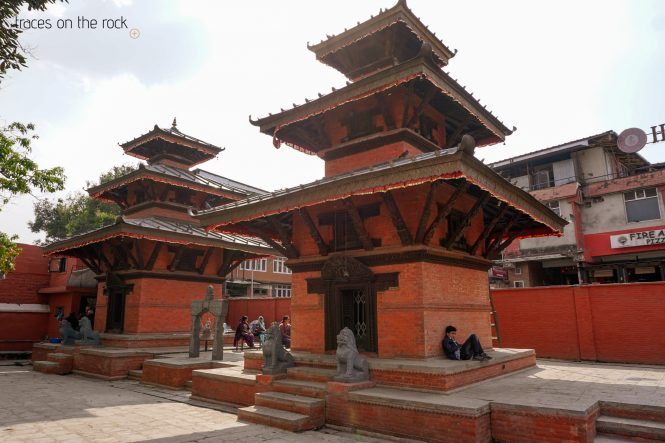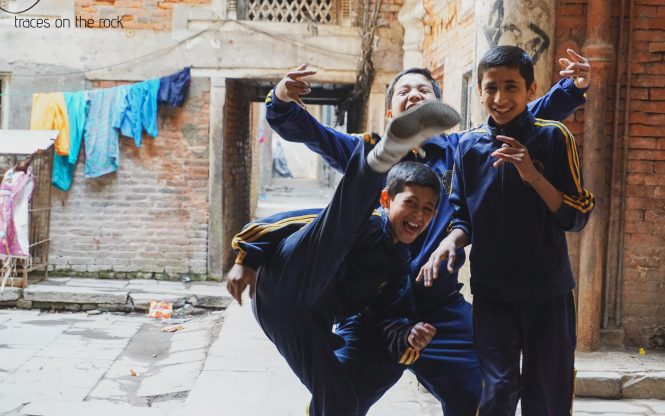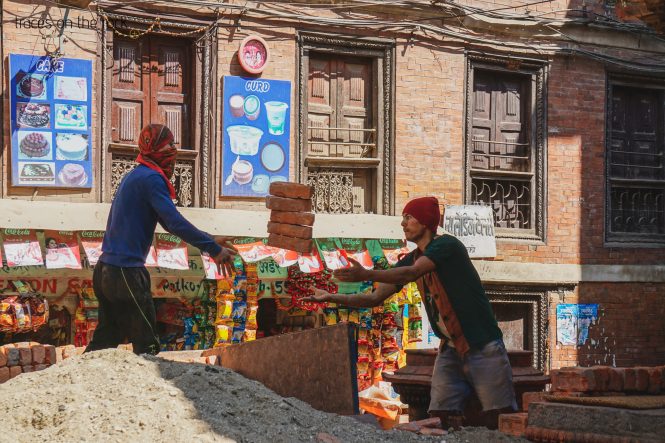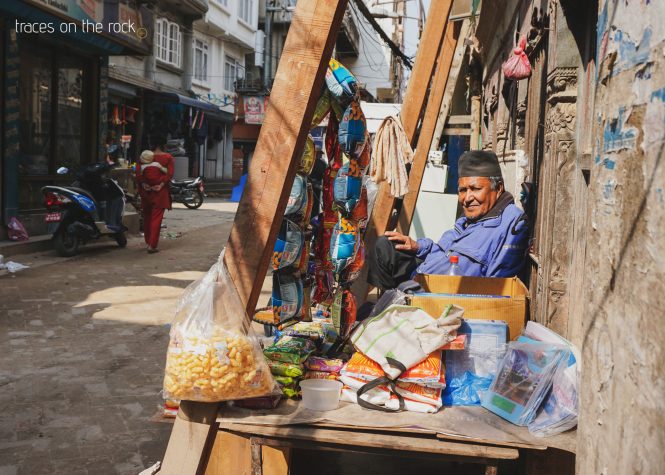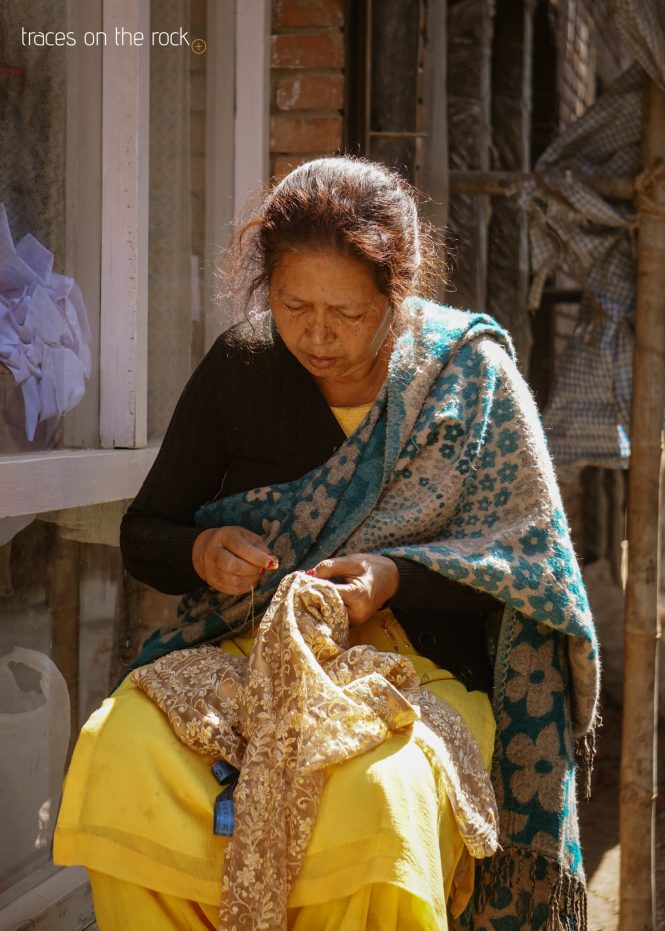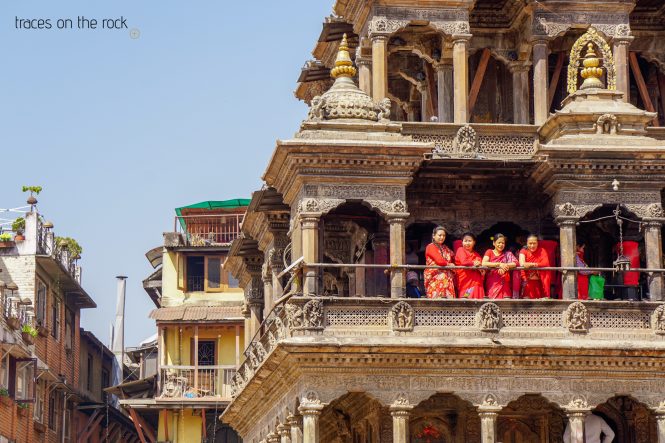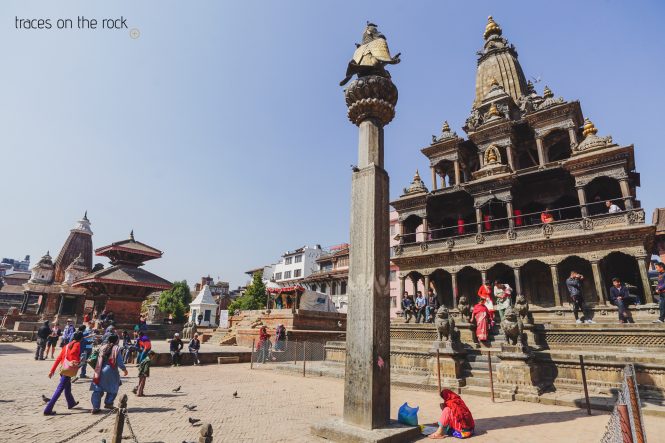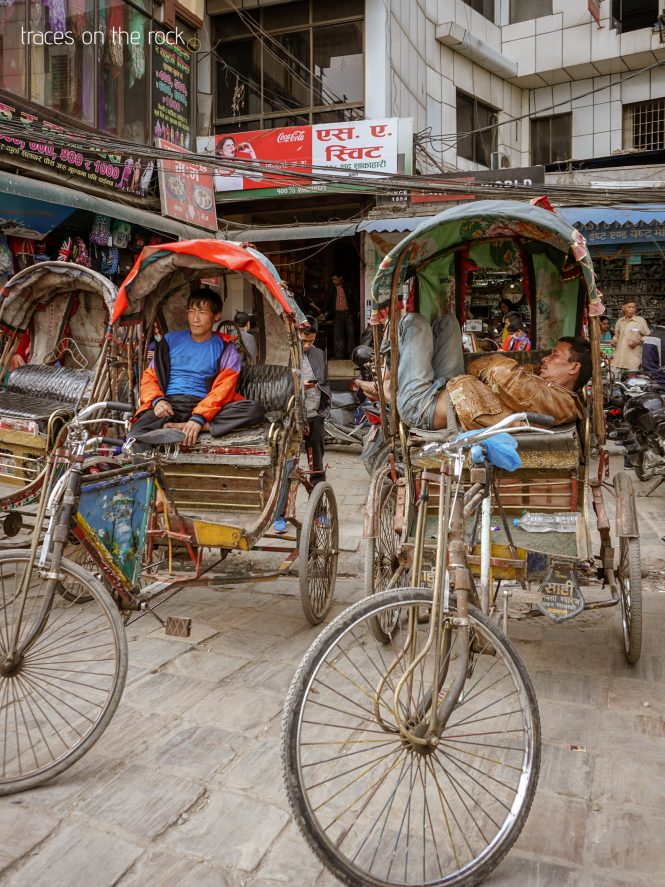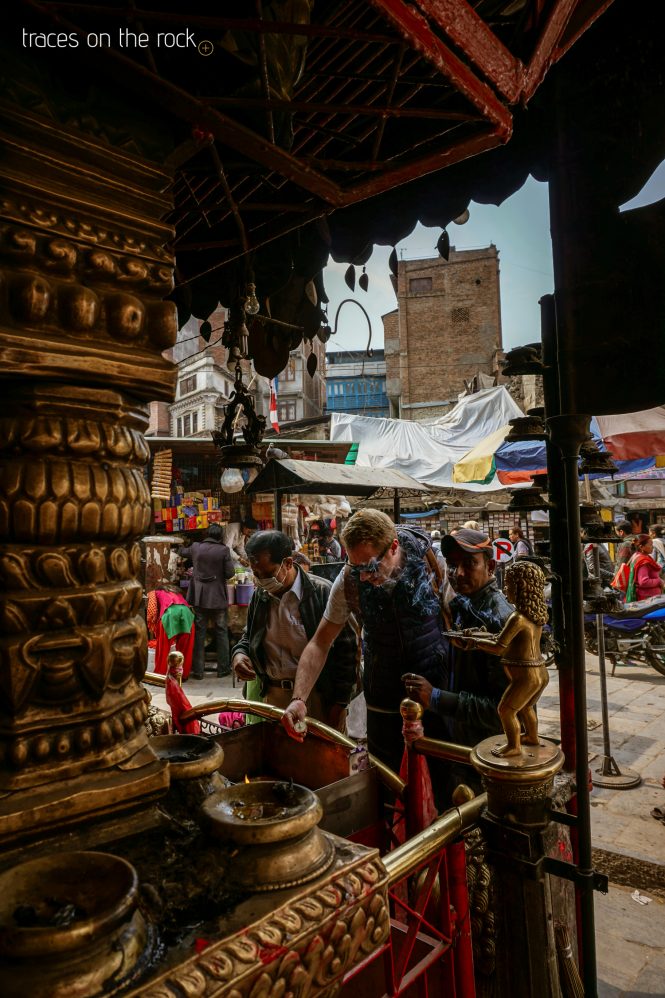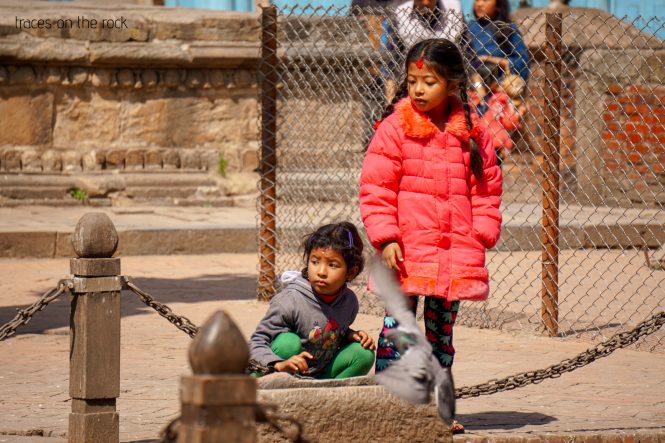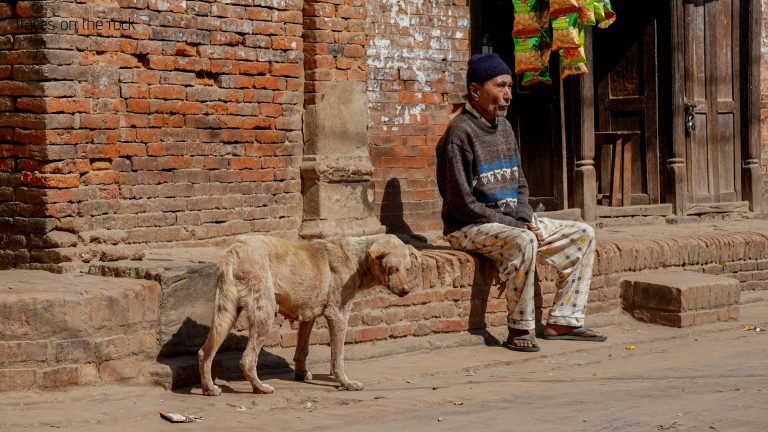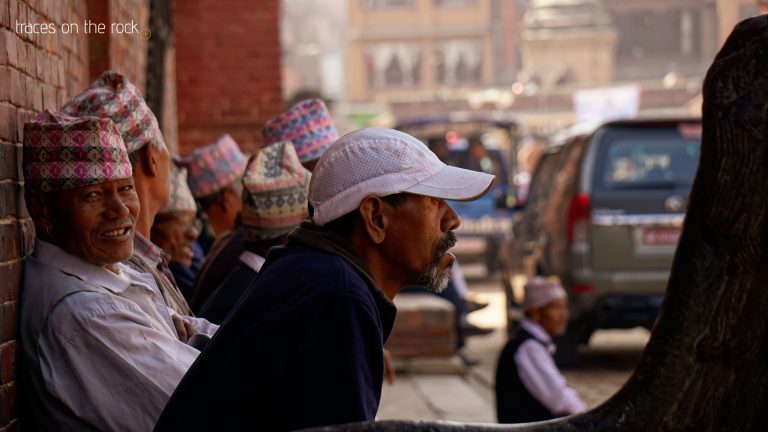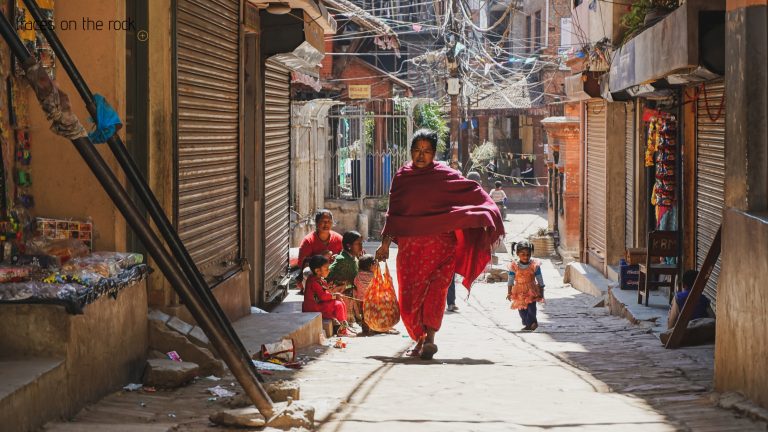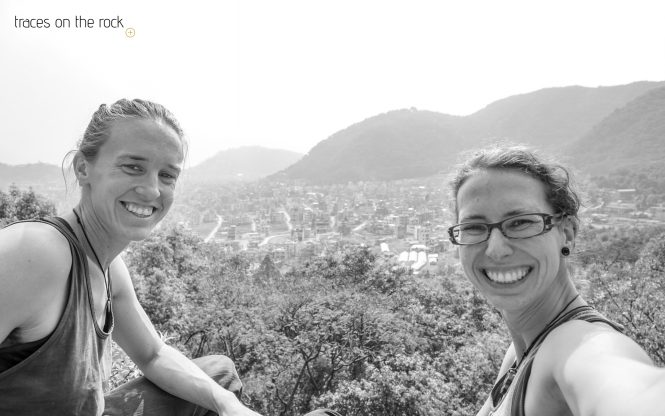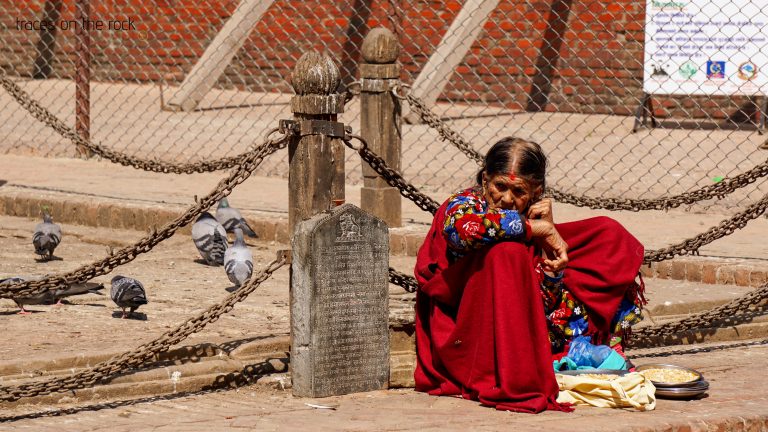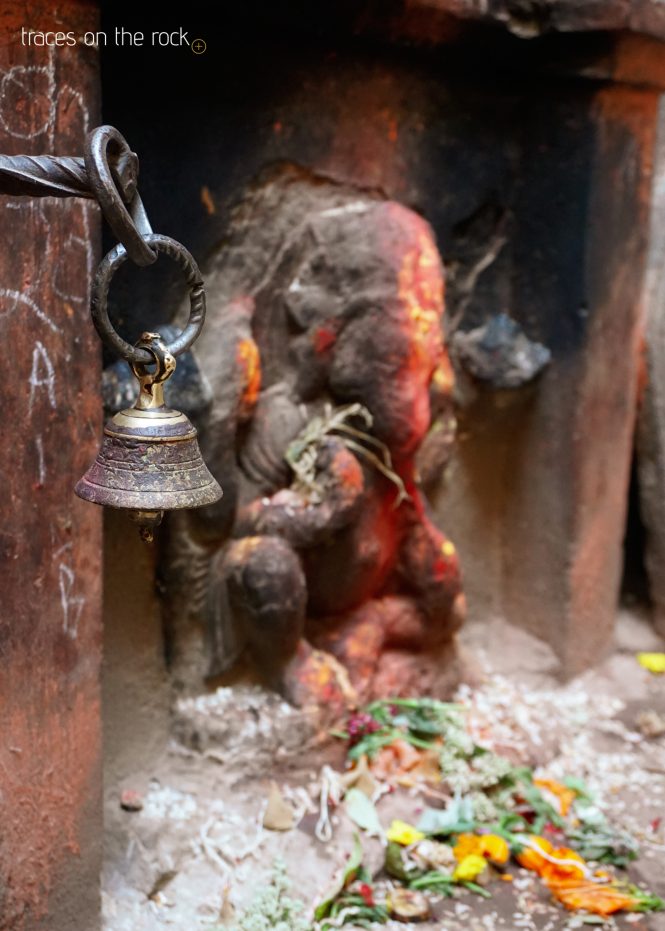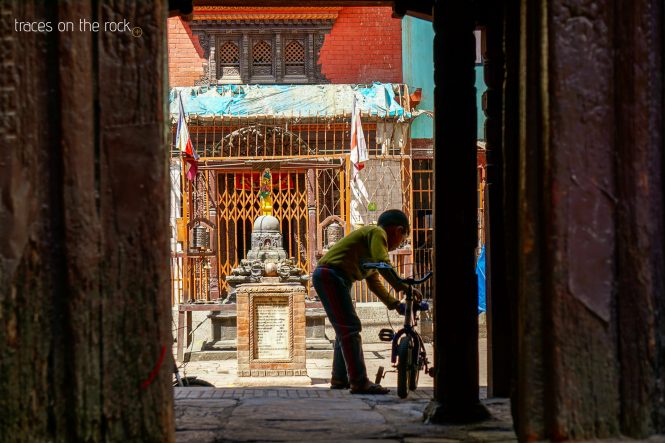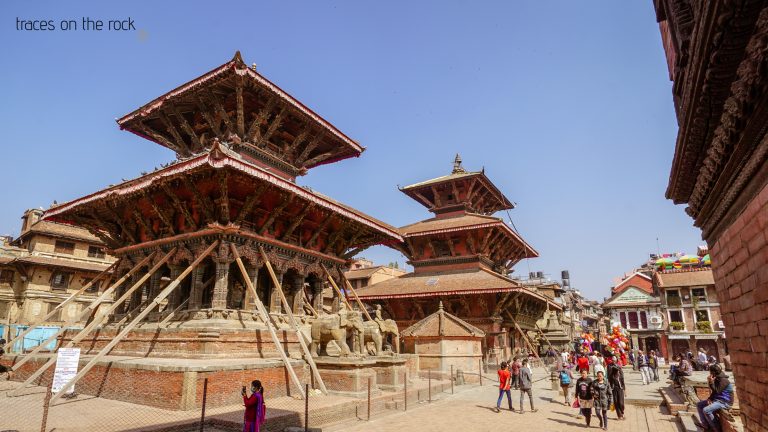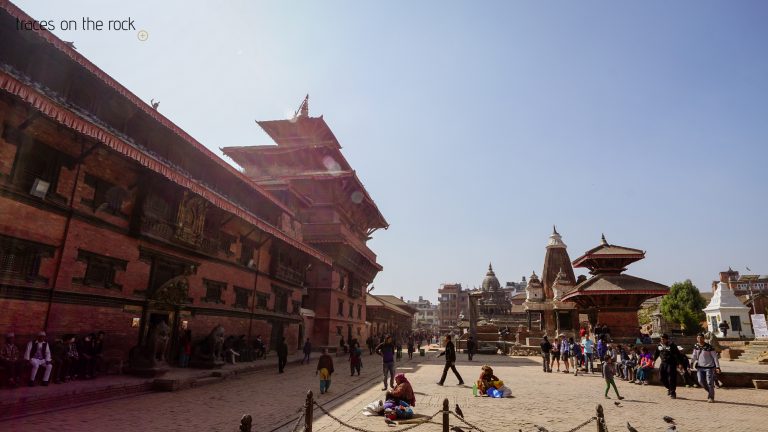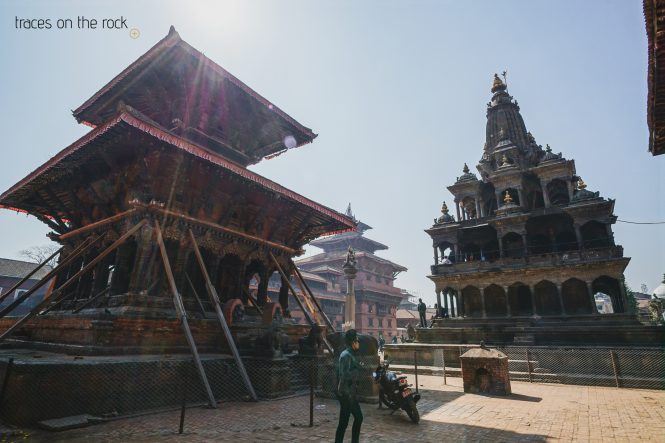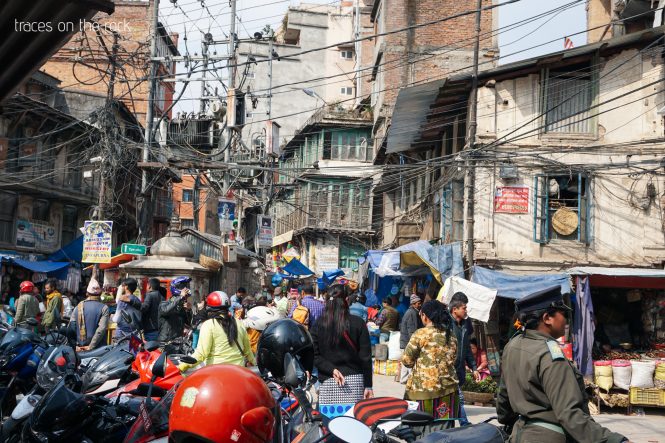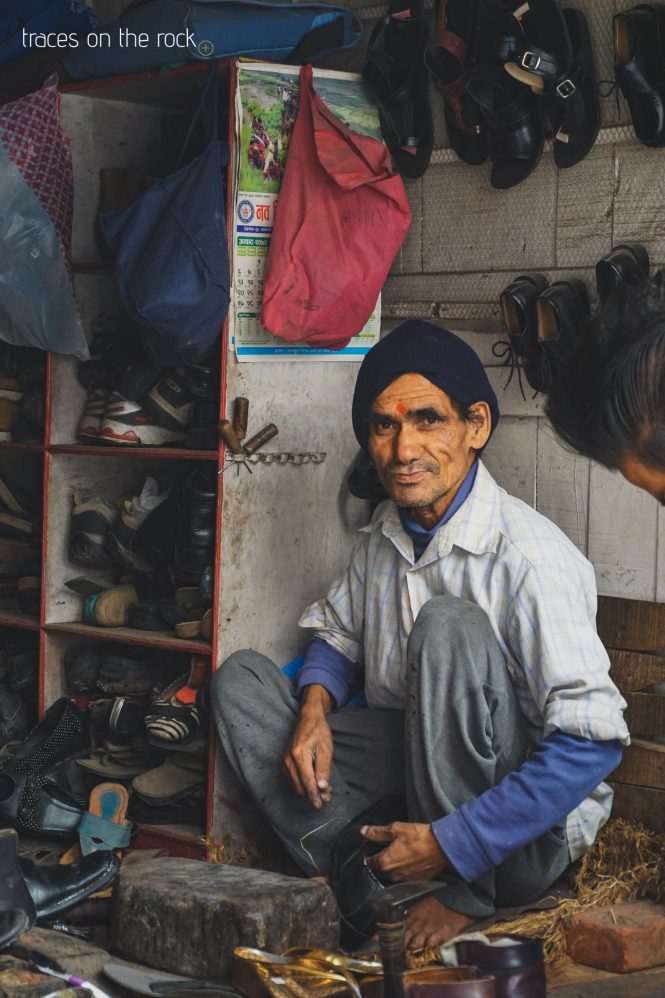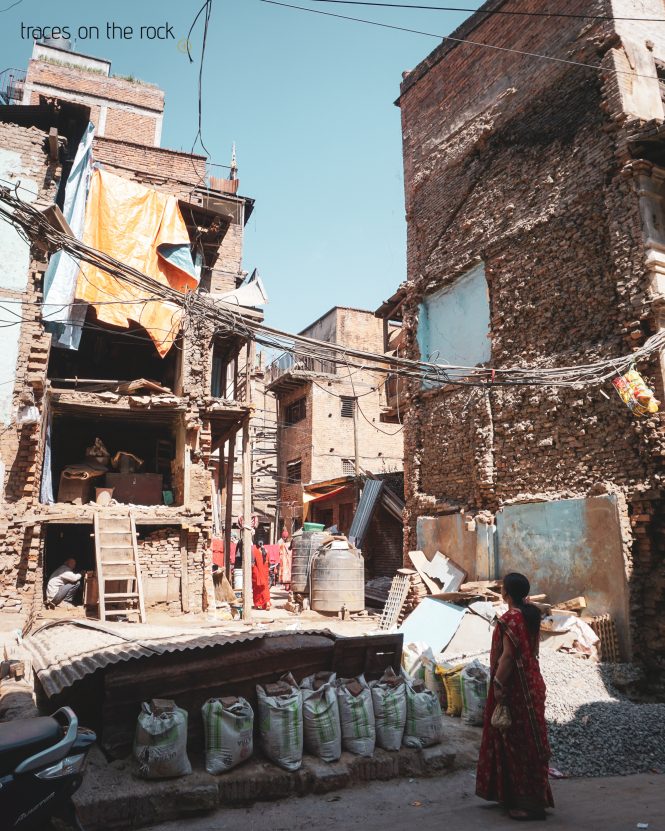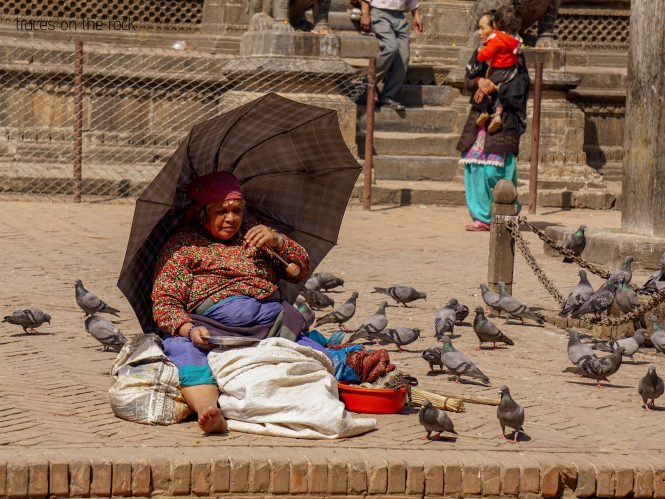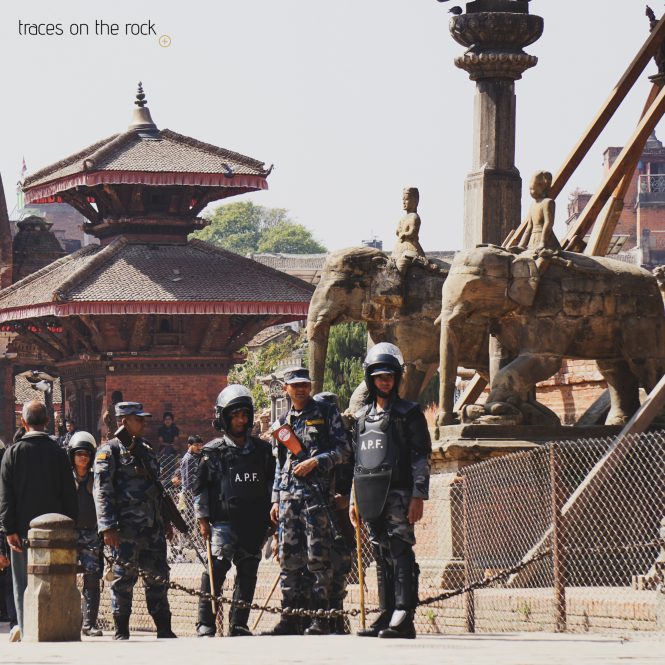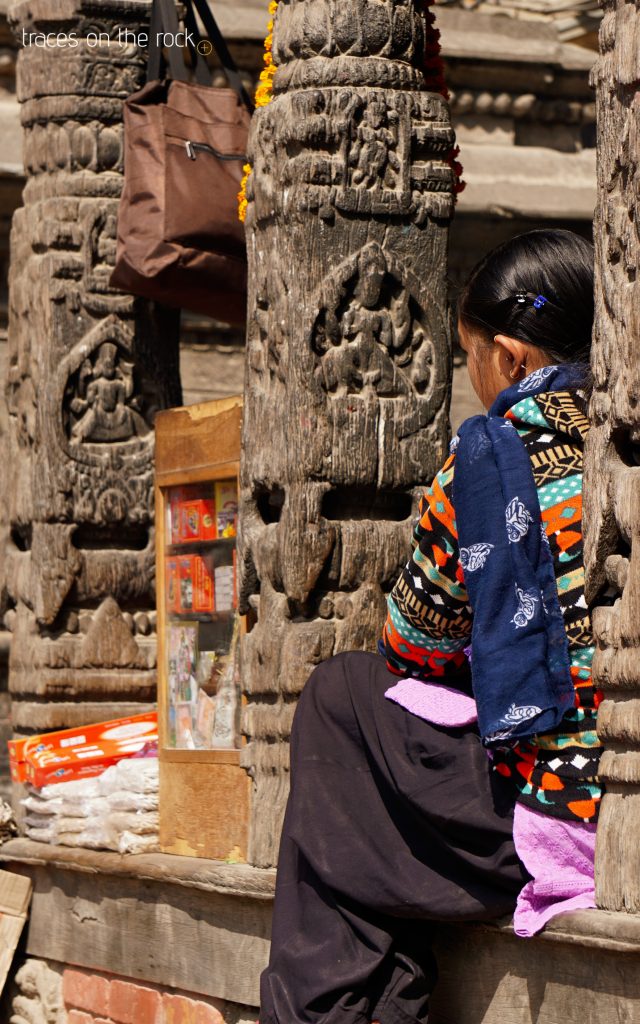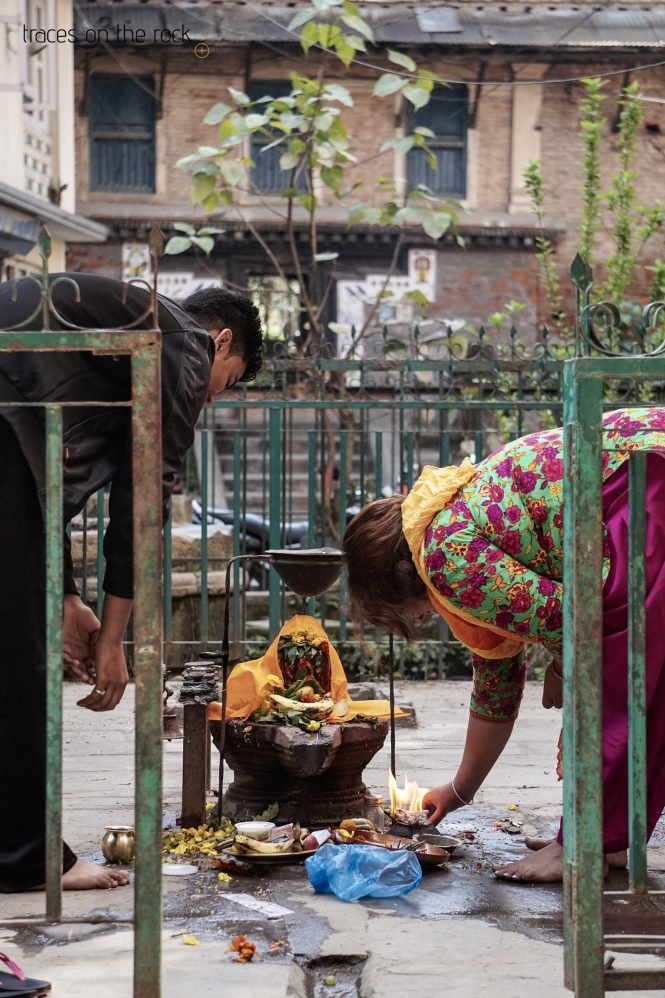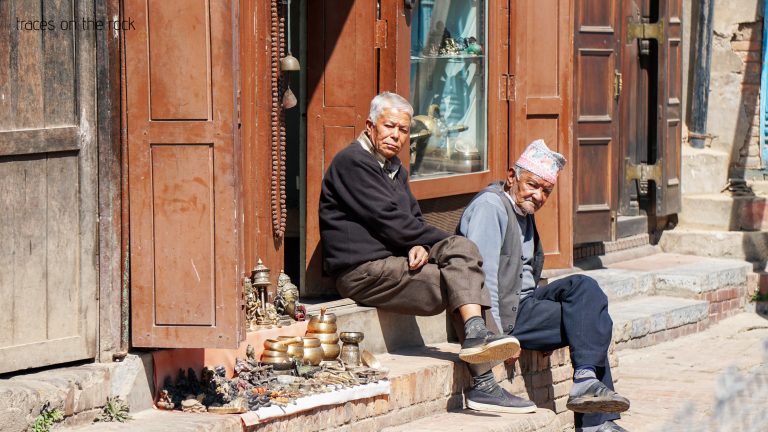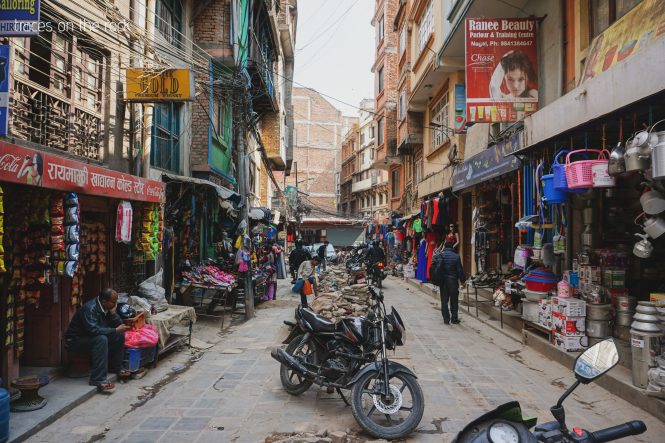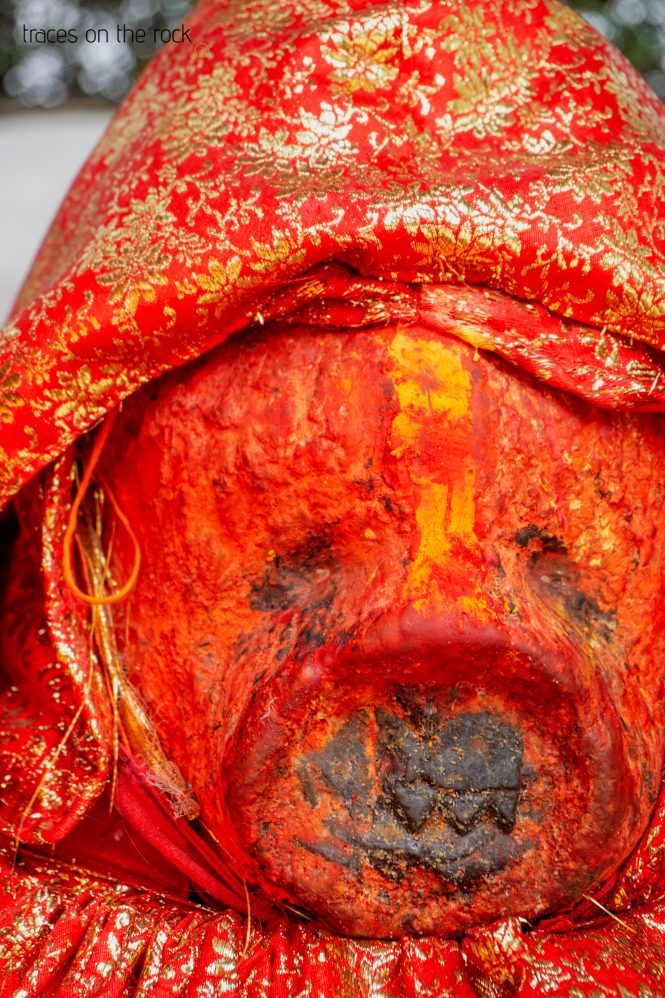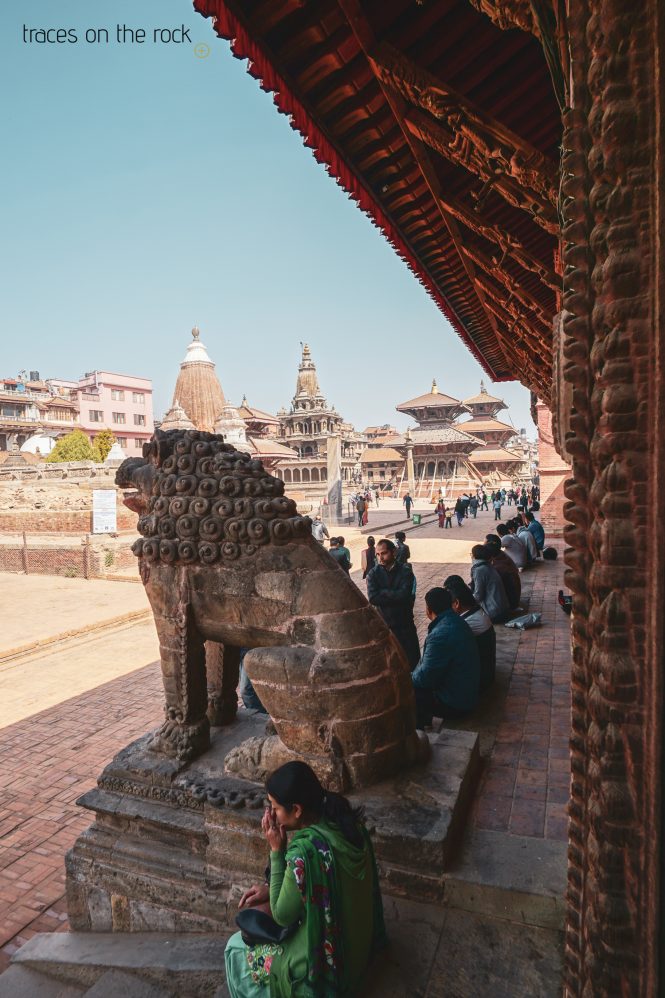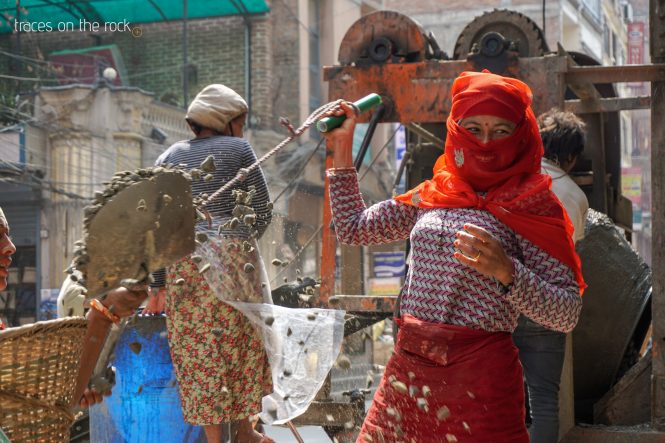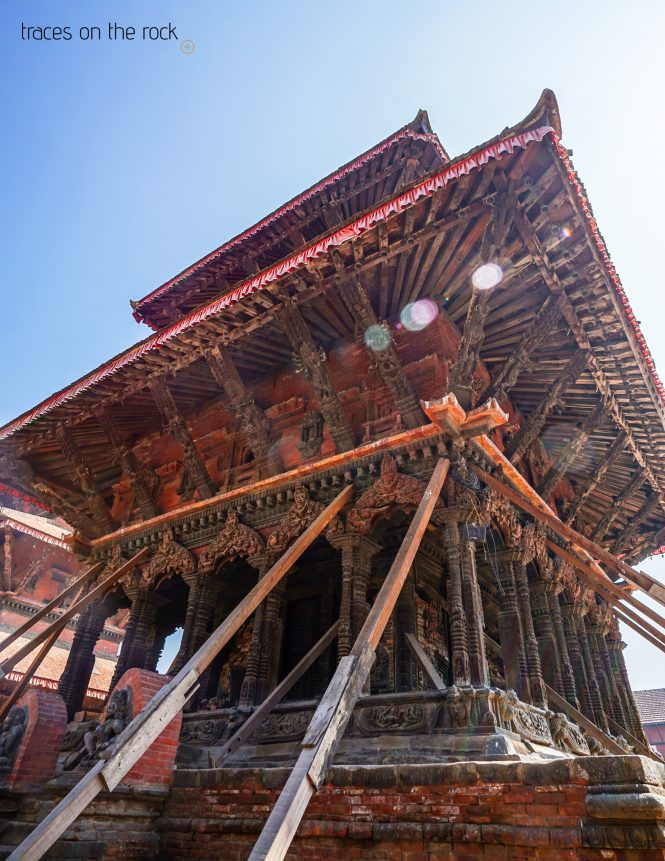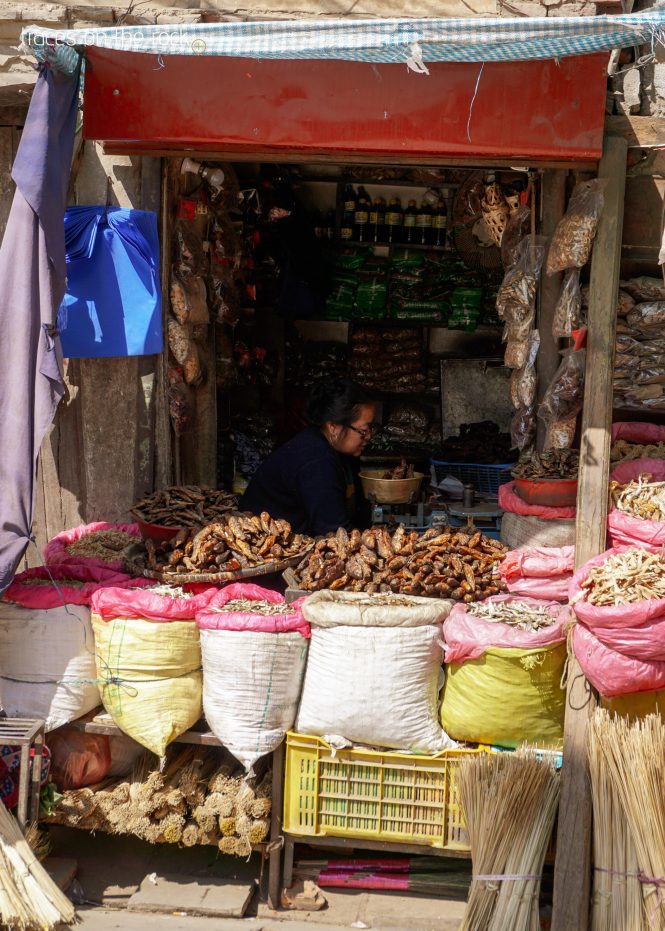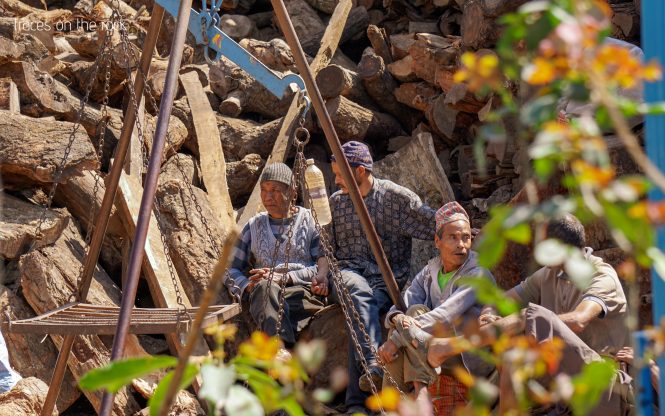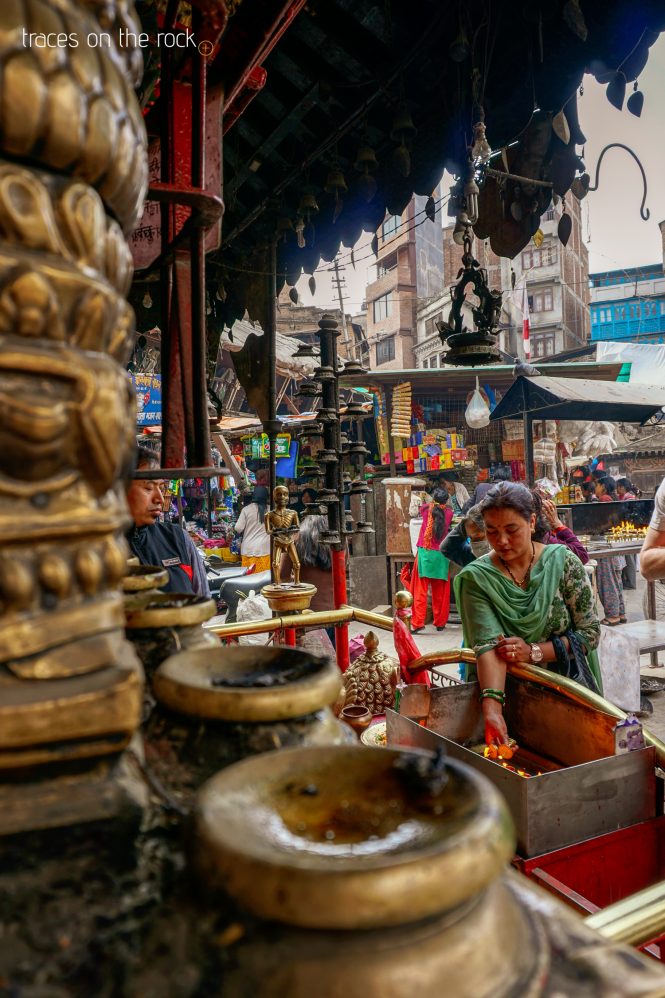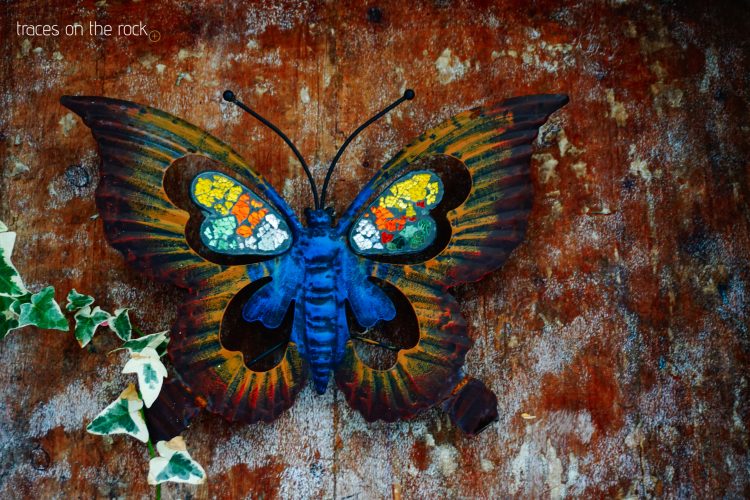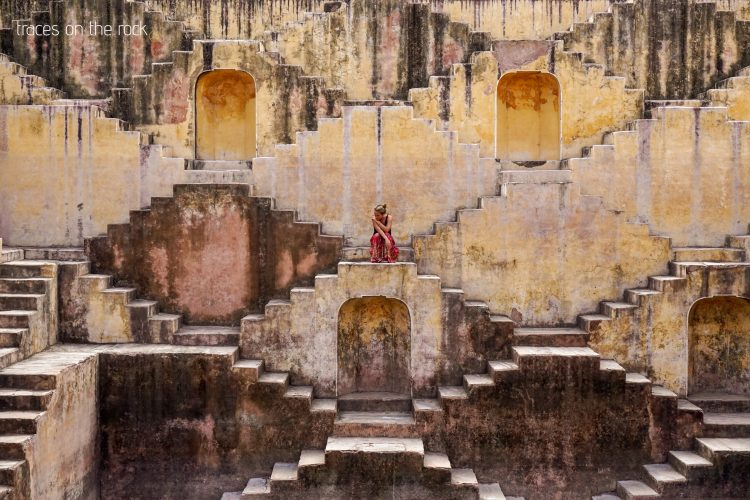Together with Jenny I explored Kathmandu – the capital of Nepal. We met in Hampi and decided to meet in Nepal for some climbing. Here we are now – and we already explored the climbed aroung the area of Kathmandu. Local climbers from the climbing climbing gym in Kathmandu (Astrek Climbing Wall) gave us information about climbing spots around Kathmandu. They told us also that we should hide our climbing plans from the staff at the park entrance of the Nagarjun park, as this is not forbidden but also not gladly seen as there have been some crimes in the area and they try to protect foreigners. Our equipment was well stored in our backpack when we entered the park. The Nagarjun Forest, a military area / park offers a small block of limestone cliffs with no difficulties besides being polished. In return, the spot offered us a nice view over Kathmandu. A group of Nepalese soldiers in full gear and with their rifles joined us eventually. They wanted to try climbing just in their boots and without a harness. We could convince them to change their plans.
Difficult times
I like Kathmandu. I fell well and could stay longer. It is different to India and yet hard to describe. The tourist area Thamel is paved with advertising signs and it’s easy to get lost in these narrow streets. As in India, the Hindu temples and places of worship are surrounded by houses, street stalls and makeshift buildings. The effects of the two earthquakes in April and May 2015 are also still visible. They are considered the deadliest catastrophe in the history of Nepal. More than 8,000 people lost their lives and over 22,000 people were injured. At times, the electricity and water supply in Kathmandu has failed. The Kathmandu valley and Namche Bazar were particularly affected. The effects of the earthquakes can still be seen today in the city and also in the rural regions. Centuries-old buildings were destroyed at UNESCO World Heritage Sites. There are still rubble and debris in the city. Many houses lack facades. Some houses are still stabilized and supported by logs. Everywhere in the city, old bricks are cleaned and used for new constructions. In rural areas around the Manaslu Circuit, locals still live in makeshift tent cities or corrugated iron huts. The labels of the aid organizations that gave the materials have already faded. But the houses have not been rebuilt yet. It is difficult to reach these regions as there are no roads. The supply of the Foothill-Tribes is only possible by means of a burro. In caravans of up to ten animals we meet the pack donkeys regularly on the narrow mountain paths. A one way trip can take five to six days. Mountaineers on Everest were also affected. An earthquake-triggered avalanche rolled over the base camp. Several climbers died.
I am really surprised by the friendliness I found here in every street corner. People are relaxed, happy and smile very often. It is hard to believe that even 10-20 years ago bloody clashes and demonstrations held the country in suspense. It makes me grateful to be able to enjoy the beauty of the mountains nowadays.
Every morning at 7am small shops open. The shop owners are sweeping the small area in front of their stores and clean the dust from the previous day and the night. The fabrics, bags, jackets, hiking maps and crafts are being installed meticulously at the entrance, on the stairs and in front of the shop – such as the day before. Dealers of fresh fruit or Nepalese omelet position themselves on the roadside, looking for their first hungry customers. Each one had his own area and you could recognize them after a little time. They seem to be frugal. And that despite the turbulent past.
From 1970 to 2008, Nepal was a monarchy. Since 1996 the communist Maoists fought in a civil war against the royal family and the existing caste system. The clashes culminated in the massacre of the royal family in 2001, in which the king and much of the family was killed. The opinions about the crime and the offender diverge. The king’s son took over the regency. It followed a turbulent time, in which thousands of people lost their lives, parliaments have been appointed and set down, and the state of emergency was declared with some questionable rights for the state and the police. In 2006, the Civil War was settled. This is just 20 years ago! Since 2008, Nepal is a republic.
The impact of these fledgling events have drawn Nepal. Poverty and wealth are close together. The political system is still young. Corruption is not uncommon. Old management structures and networks are far from broken. The desire for democracy is unabated as the book covers of countless bookshops in Thamel suggest. It is a bit disconcerting to move in this setting. On the other hand I grew up as well in the phase of a system change as I am born and raised in the former East Germany, which I found not much disconcerting. It is always a matter of perspective and how close one is to the events.
And to bring you the people and the lives of Nepalis closer, here are a few street scenes.

